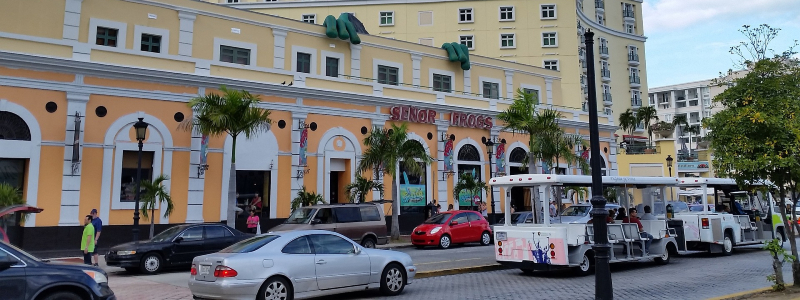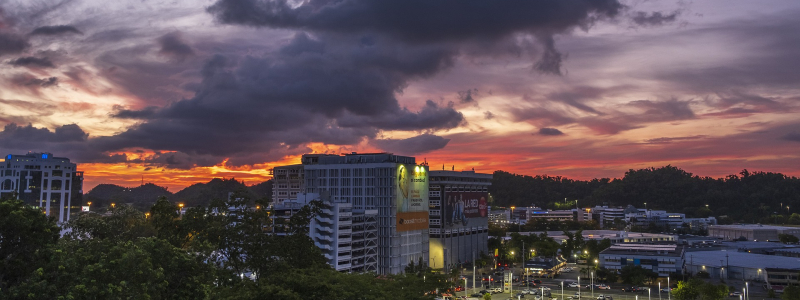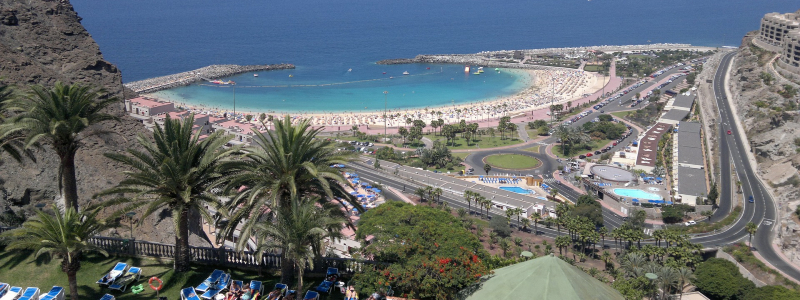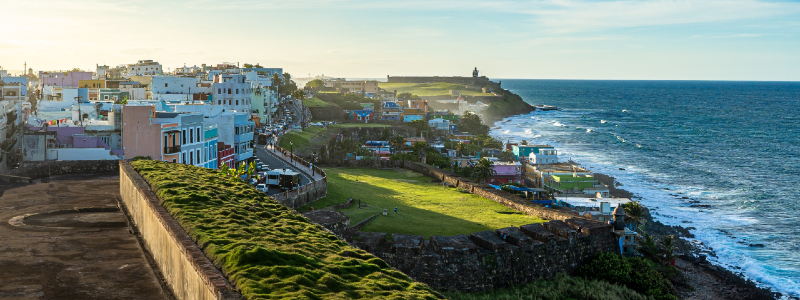Puerto Rico has a population of just under 3.2-million people. For every 1,000 people, out of that population of 3.2-million, 614 own automobiles. The citizens of Puerto Rico rely heavily on automobiles, and this leads to traffic conditions that are not unfamiliar nor unique. Commutes during rush hour can cause frequent delays, which can be irritating for most. For business, however, high traffic conditions can mean excellent returns if you’ve invested in billboard advertising. bMedia will explain more below.
Being aware of Puerto Rico traffic conditions, and how they affect the day-to-day life of a regular Puerto Rican citizen, makes it easier to understand the power of an excellent billboard, and how to properly harness this platform for advertising. When done strategically, well-thought-out and well-placed billboard media can take advantage of extremely trafficked areas in Puerto Rico.

What To Expect When Driving In Puerto Rico?
Puerto Rico’s road laws are quite similar to those found in the United States. For example, everyone in Puerto Rico drives on the right side of the road, and wearing your seatbelt is mandatory. But, despite these similarities, there are a few things that differentiate American drivers, and Puerto Rican drivers. These are quirks of the road that you’re likely to encounter on a regular basis.
If you look at the United States’ road laws, and Puerto Rico’s road laws, you’ll find that they’re quite similar. People drive on the right side of the road, you must wear a seatbelt, child seats must be used if your child is under four; those are just some examples of the road laws that Puerto Rico and the United States share.
Unlike the United States, however, traffic signs are in Spanish, rather than English. Each traffic sign is a universal traffic sign, but every word on the sign is in Spanish. Along with that, speed limits are written in Miles-Per-Hour, but distances are written in kilometers, rather than miles.
While the laws are similar to the United States, the ways in which drivers act tends to be a little different. It’s not uncommon for drivers to change lanes without using their turn signals, for example, and drivers often speed past red and yellow-lights. Along with that, speed limits are often thought of as “suggestions” rather than rules.
Despite those quirks, driving in Puerto Rico is, overall, a fairly safe and painless experience. Some drivers don’t always obey the rules of the road, but most of them do. But, with that being said, it’s important to be flexible.
- Most of Puerto Rico’s road laws are exactly the same as those found in the United States
- Traffic signs are universal, but the words on the signs are in Spanish, rather than English
- Driving in Puerto Rico has many quirks, such as turn signals being used infrequently and speed limits and red lights being more of a “suggestion” than a rule

What Are Some Of The Heaviest Traffic Congestion Points In Puerto Rico?
In Puerto Rico, the heaviest traffic congestion points are in San Juan. San Juan is the capital of Puerto Rico, and as such, it has the largest population out of any other place in Puerto Rico. Most of the Puerto Rico traffic comes from the highways and freeways that lead to and from San Juan, although there is plenty of traffic congestion to be found within the San Juan Metropolitan Area.
San Juan is the capital of Puerto Rico, and it’s the most populated city in Puerto Rico. In fact, the San Juan Metropolitan Area has a population of around 2.6-million, which is a significant percentage of Puerto Rico’s population of 3.2-million.
In San Juan, the heaviest traffic congestion is found on the freeways and highways. Many of these freeways and highways begin in other parts of the country and lead directly to San Juan. Since many people work in San Juan, even if they live somewhere else in the country, the freeways and highways are almost always busy.
San Juan’s most congested freeway is the PR-18. The PR-18 sees an average of 286,800 drivers, every single day. It isn’t a particularly long freeway – less than four-miles – but it connects San Juan and Rio Piedras – a municipality of San Juan – and makes it easier for drivers to move from one part of San Juan to another.

The PR-52 is another very busy freeway that is often congested. Beginning in Ponce, which is located in the southern part of Puerto Rico, and ending in San Juan, which is in the northern part of Puerto Rico, the PR-52 connects one end of the country with the other and serves as one of Puerto Rico’s most traveled freeways. As such, it is also one of the heaviest traffic congestion points in Puerto Rico.
There are other freeways and highways that serve as heavy traffic congestion points. But, the PR-18 and PR-52 are some of Puerto Rico’s most congested roads, due to the amount of traffic that they see on a daily basis.
To deal with traffic congestion, it’s important to leave early, especially if you know it will take some time for you to get to where you need to be. Along with that, it’s important to remember that if you’re going towards San Juan, no matter what freeway you’re taking, rush hour is from 6 AM to 9 AM. But, if you’re leaving San Juan, rush hour is from 4 PM to 7 PM.
- San Juan has the heaviest traffic congestion points in Puerto Rico, due to the prevalence of cars
- The PR-18 and PR-52 are some of the most congested freeways, and they see large volumes of Puerto Rico traffic every single day, due to their connection to San Juan
- Leaving early, to avoid rush hour, will make your commute a lot easier
- Rush hour is 6 AM to 9 PM if you’re going towards San Juan
- If you’re going away from San Juan, rush hour is 4 PM to 7 PM
Why Traffic Congestion Is Great For Billboards:
Traffic congestion may not be pleasant to deal with, but when it comes to billboard advertising, traffic congestion is exceptionally valuable. Where there’s traffic, there are drivers, and where there are drivers, there are people who will see your billboard and engage with what you are offering.

In Puerto Rico, the worst traffic spots – along the PR-18, for example – are the best billboard advertising locations. With so many people driving through, every single day, your billboard will be seen. And, due to the traffic congestion in those areas, drivers are forced to stop and wait, and this means they’ll see your billboard and know what it is that you are offering.
Getting people to see and engage with your billboard is often one of the biggest challenges of billboard advertising. Placing your billboard in a traffic congestion spot eliminates that challenge, as it ensures your billboard is seen by a variety of drivers and engaged with.
- Traffic congestion is exceptionally valuable when it comes to billboard advertisers
- Traffic congestion points are full of drivers, which ensures that your billboard is seen
- When there’s traffic congestion, drivers are forced to stop and wait and this ensures that they see your billboard and have time to engage with it
Contact bMedia for effective outdoor media advertising in Puerto Rico.


 787 792 4113
787 792 4113
